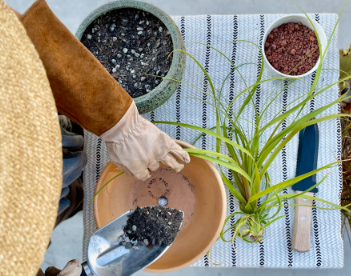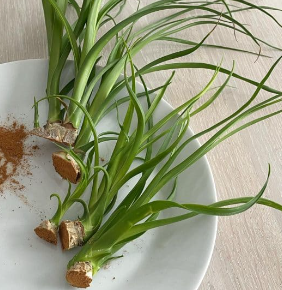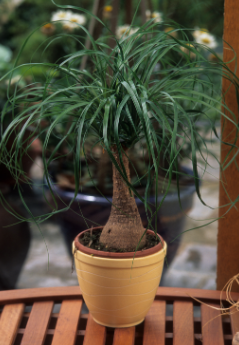
If you’re a plant lover looking to expand your collection without spending a dime, propagating your ponytail palm is a great way to do so! Not only does it offer the chance to grow new plants, but it’s also a fun and rewarding process. Whether you’re a seasoned gardener or a beginner, this step-by-step guide will walk you through how to propagate your ponytail palm and grow your plant collection for free.
In this article, we’ll cover everything you need to know about ponytail palm propagation, including the best methods, tools, and tips for success. Let’s get started!
What is a Ponytail Palm?
Before diving into propagation, let’s quickly review what makes the ponytail palm so special. Despite its name, the ponytail palm (Beaucarnea recurvata) is not actually a palm tree. Native to Mexico, this unique plant is known for its bulbous trunk and long, cascading leaves that resemble a ponytail. It’s a low-maintenance houseplant that thrives in dry conditions and can live for many years, making it a favorite for plant enthusiasts.
Its hardy nature and ability to thrive in various environments make it an ideal candidate for propagation.
Why Propagate Your Ponytail Palm?
Propagating your ponytail palm offers several benefits, including:
- Cost Savings: Why buy more plants when you can grow them yourself for free?
- Increased Plant Collection: Share your new plants with friends and family or create a lush indoor garden.
- Personal Satisfaction: There’s something incredibly rewarding about watching a new plant grow from a small cutting into a thriving, full-sized plant.
With that in mind, let’s dive into the best methods for propagating a ponytail palm!
Methods for Propagating a Ponytail Palm
There are a few different ways to propagate your ponytail palm. The two most common methods are offset propagation and stem cutting propagation. Below, we’ll explore both options.
1. Propagating Through Offsets (Best Method)
Ponytail palms are known for producing small offshoots, or “pups,” around the base of the plant. These pups are essentially baby plants that can be removed and grown into independent plants. This is the easiest and most common method of propagation.

Here’s how to propagate ponytail palm from offsets:
- Step 1: Identify the pups. Look for small offshoots growing at the base of the parent plant. These are usually easy to spot as they have their own root system.
- Step 2: Remove the pup. Gently separate the pup from the parent plant using a clean, sharp knife or gardening scissors. Be careful not to damage the pup or the parent plant.
- Step 3: Allow the pup to dry. Let the offset dry for a few days to callus over. This helps prevent rot when you plant it.
- Step 4: Plant the offset. Once the pup has dried and callused, place it in a well-draining pot with cactus or succulent soil mix. Lightly water it and place it in a warm, bright spot.
- Step 5: Care for the new plant. Water the new plant sparingly, as ponytail palms are drought-tolerant and prefer dry conditions. Overwatering can lead to rot, so be sure to let the soil dry out between waterings.
2. Propagating from Stem Cuttings (Alternative Method)
While not as commonly recommended as propagating from offsets, you can also propagate ponytail palms from stem cuttings. This method is slightly more challenging because the cuttings require time to root, and they can be more susceptible to rot.
Follow these steps for stem cutting propagation:

- Step 1: Select a healthy stem. Look for a mature stem from the main plant that is healthy and free of disease. Cut the stem just below a leaf node using a sharp knife.
- Step 2: Allow the cutting to callus. Place the cutting in a dry, warm spot for 3-4 days to allow the cut end to callus over.
- Step 3: Prepare the pot. Fill a small pot with a well-draining succulent mix. Use a mix of cactus soil and perlite to ensure proper drainage.
- Step 4: Insert the cutting. Insert the callused end of the stem cutting into the soil about 1-2 inches deep.
- Step 5: Water and care. Mist the cutting lightly and place it in a bright spot but out of direct sunlight. The cutting will take several weeks to establish roots. During this time, avoid overwatering to prevent rot.
Want more gardening tips? Sign up for our free gardening newsletter for our best-growing tips, troubleshooting hacks, and more!
Key Tips for Successful Propagation
- Use clean tools: When propagating, always use sterilized tools to prevent introducing bacteria or fungi to the plant.
- Be patient: Both methods of propagation take time, so don’t rush the process. It can take several weeks for the pups to establish themselves or for stem cuttings to develop roots.
- Choose the right environment: Ponytail palms thrive in bright, indirect light. Be sure to place your propagated plants in a location that gets plenty of light but avoids harsh, direct sun.
- Avoid overwatering: Overwatering is the #1 cause of failure when propagating ponytail palms. Always let the soil dry out completely before watering again.
Common Mistakes to Avoid
Even experienced gardeners can make mistakes when propagating plants. Here are a few common pitfalls to watch out for:
- Overwatering: As mentioned, ponytail palms are drought-tolerant and don’t like sitting in soggy soil. Always ensure good drainage and water sparingly.
- Not allowing the cutting to callus: If you skip the drying process for cuttings or offsets, you risk rot setting in before the plant can establish roots.
- Not giving enough light: Insufficient light can cause the new plant to struggle. Ensure your propagated plant receives plenty of bright, indirect light.
Propagating your ponytail palm is an easy and rewarding way to expand your plant collection—without spending any money! Whether you choose to propagate through offsets or stem cuttings, with a little patience and care, you can grow new plants that will thrive in your home for years to come.
With the tips and techniques outlined in this post, you’re well on your way to successfully propagating your ponytail palm and enjoying a new, free addition to your collection. Happy gardening!

FAQs:
1. How long does it take for a ponytail palm cutting to root?
It can take anywhere from 4-8 weeks for a stem cutting to root, depending on conditions like temperature, humidity, and light.
2. Can you propagate a ponytail palm in water?
While some plants can be propagated in water, ponytail palms generally root better in well-draining soil. Water propagation may lead to rot in most cases.
3. Can I propagate a ponytail palm in winter?
Yes, you can propagate during the winter, but keep the cutting in a warm environment (around 70°F/21°C) to encourage root growth.
Read some more articles on flowers and winter shrubs at petalwhirl.com
